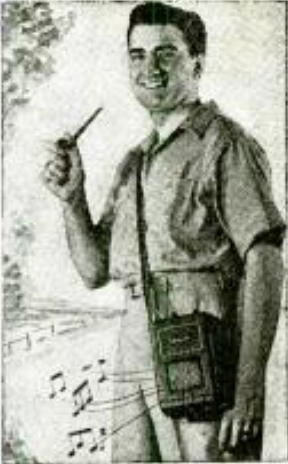 Britain was at war by the time the October 1939 issue of Pracical Mechanics hit the newsstands. Undoubtedly, much of the content had been written prior to hostilities. For example, the cover story gives some pointers on wind powered lighting plants for use in remote areas, and the magazine noted that most of the British Isles enjoyed at least eight hours per day of sufficient wind, although some planning was required as to the exact location. The gentleman shown here on the cover looks optimistic, and this view was probably from before the War.
Britain was at war by the time the October 1939 issue of Pracical Mechanics hit the newsstands. Undoubtedly, much of the content had been written prior to hostilities. For example, the cover story gives some pointers on wind powered lighting plants for use in remote areas, and the magazine noted that most of the British Isles enjoyed at least eight hours per day of sufficient wind, although some planning was required as to the exact location. The gentleman shown here on the cover looks optimistic, and this view was probably from before the War.
Wartime content was added, however, before the magazine went to press. The editorial, for example, pointed out that within the limitations imposed by the state, it was the duty of each citizen to carry on so as to cause as little disruption to national life as possible.
But the magazine also carried the extensive feature, a portion of which is shown below, with pointers on building an air-raid shelter. It noted that “regrettable though the fact may be, it seems evident that in these modern times the air-raid shelter constitutes a structure which, for some years at any rate, has come to stay.”

 Sixty years ago, there was a prospect of a ham in the White House, namely, Barry Goldwater, K7UGA/K3UIG. The October 1964 issue of 73 Magazine showed the logical conclusion, namely, an antenna on the White House. And the following cartoons, by Wayne Pierce, K3SUK, appeared in that issue.
Sixty years ago, there was a prospect of a ham in the White House, namely, Barry Goldwater, K7UGA/K3UIG. The October 1964 issue of 73 Magazine showed the logical conclusion, namely, an antenna on the White House. And the following cartoons, by Wayne Pierce, K3SUK, appeared in that issue.
















